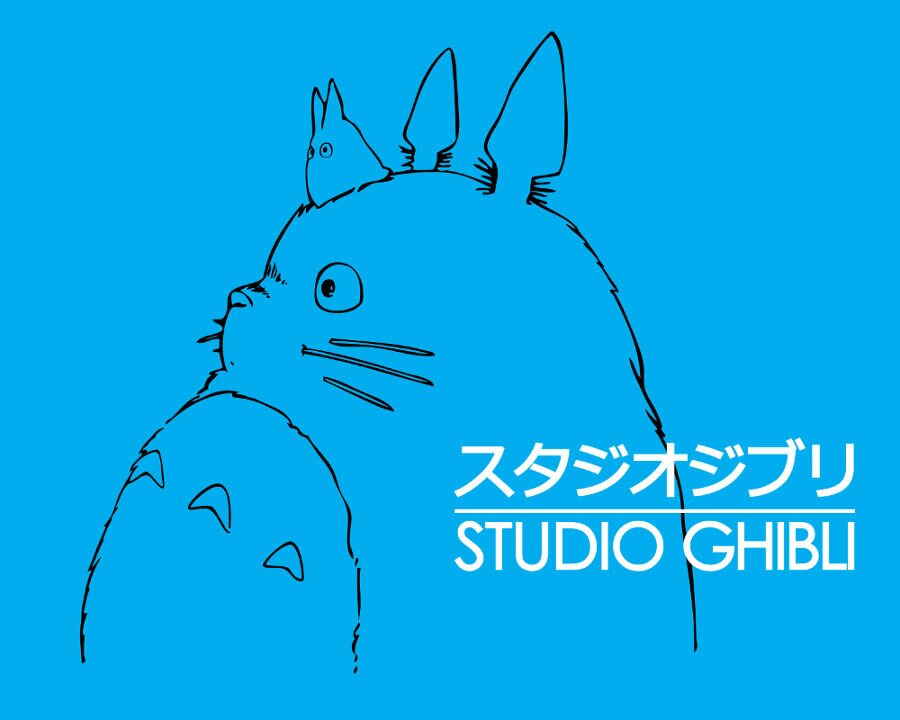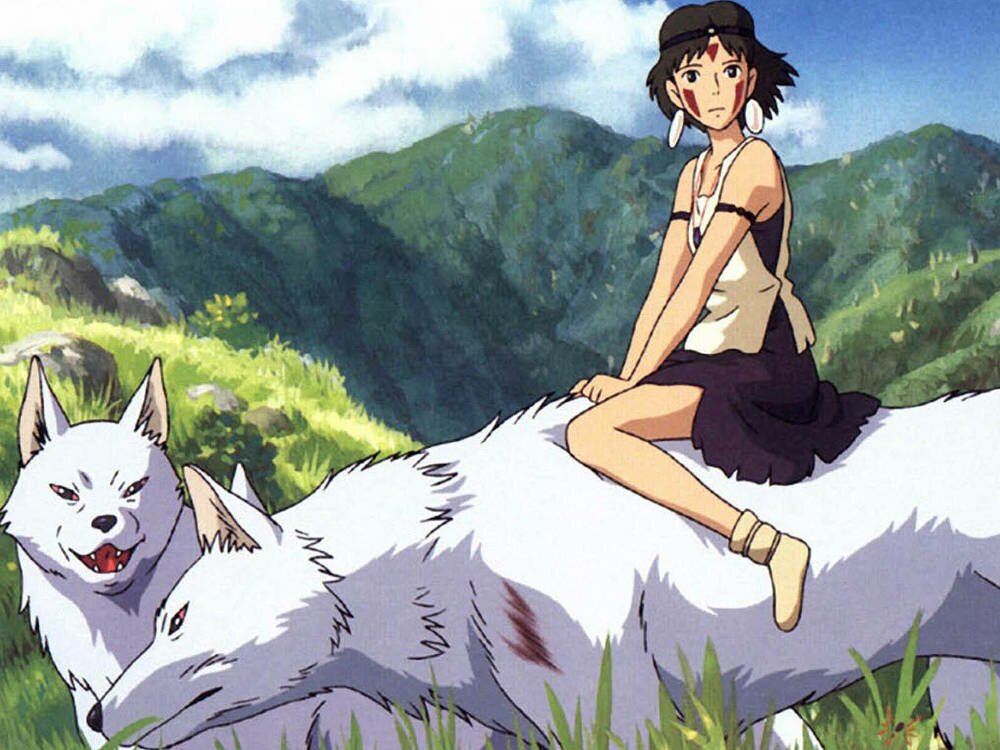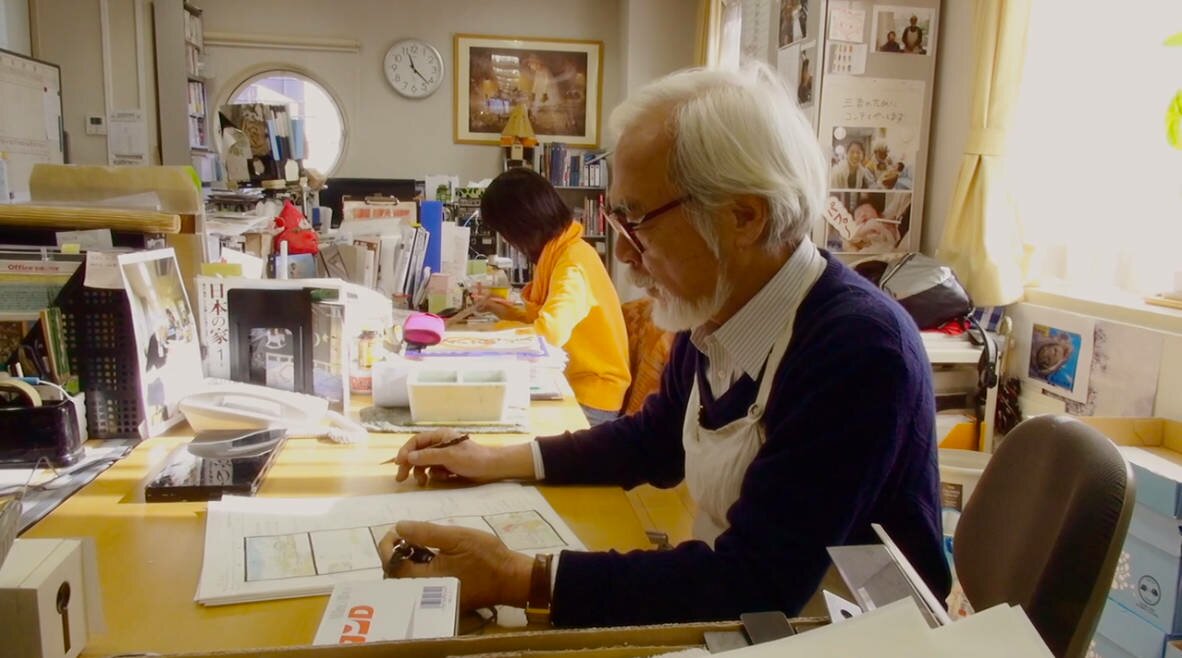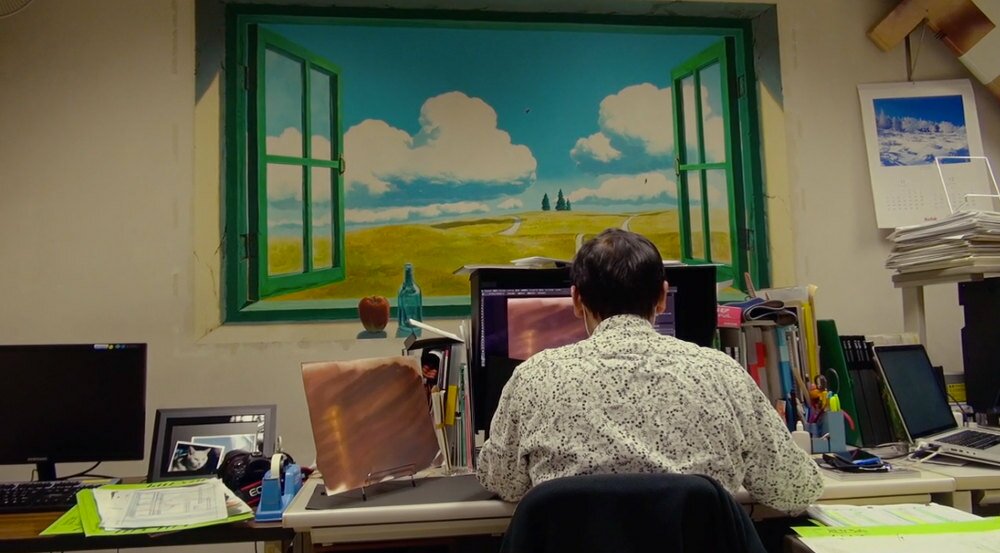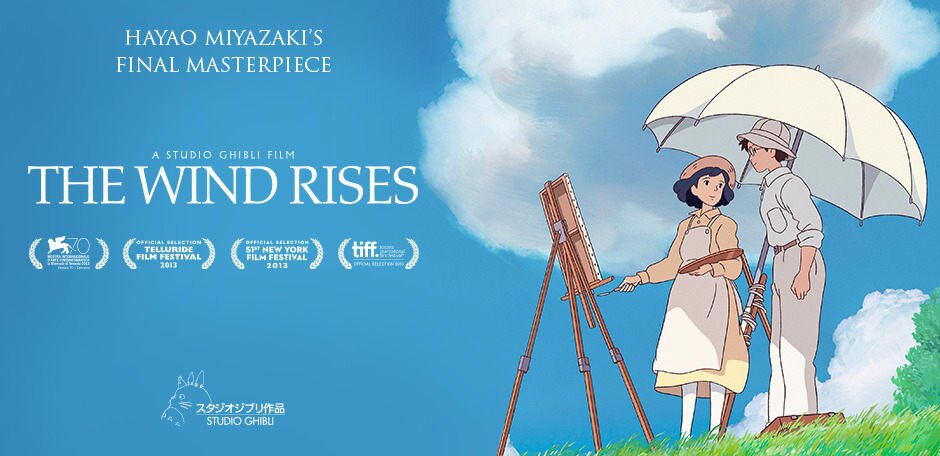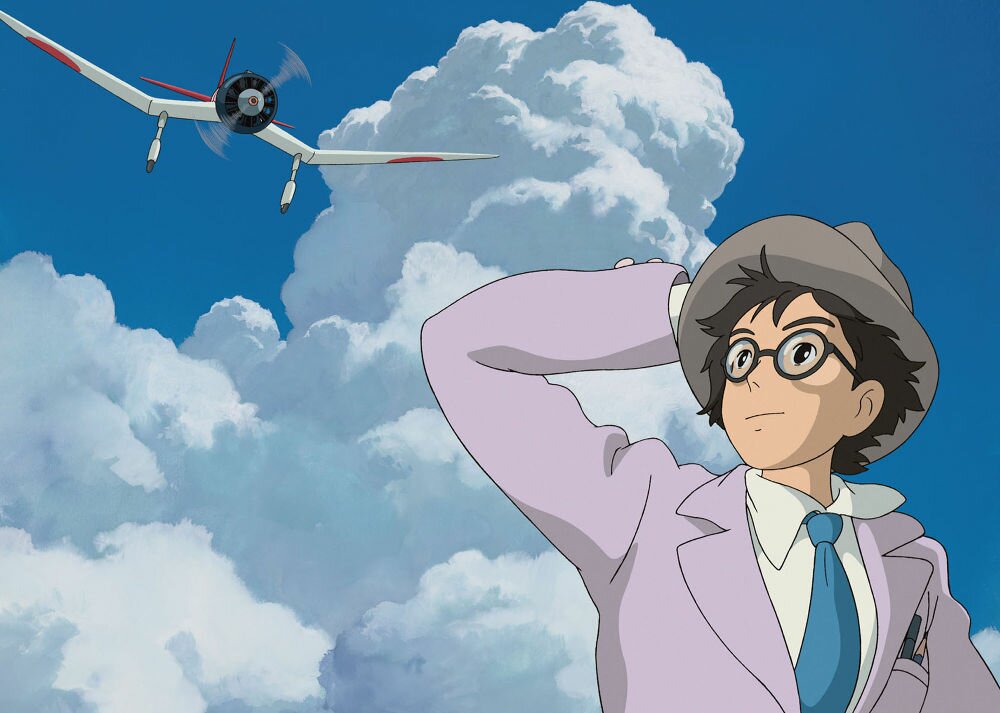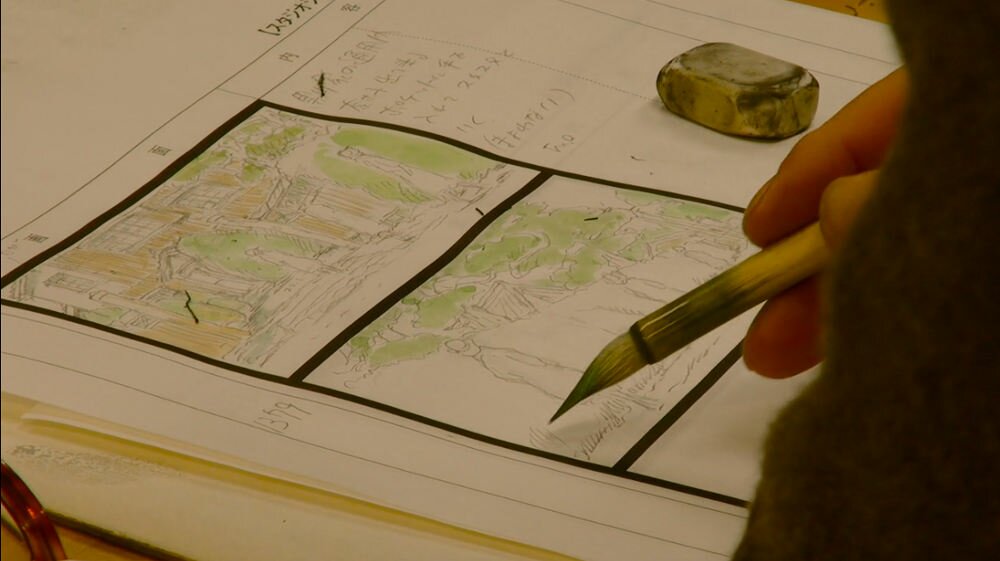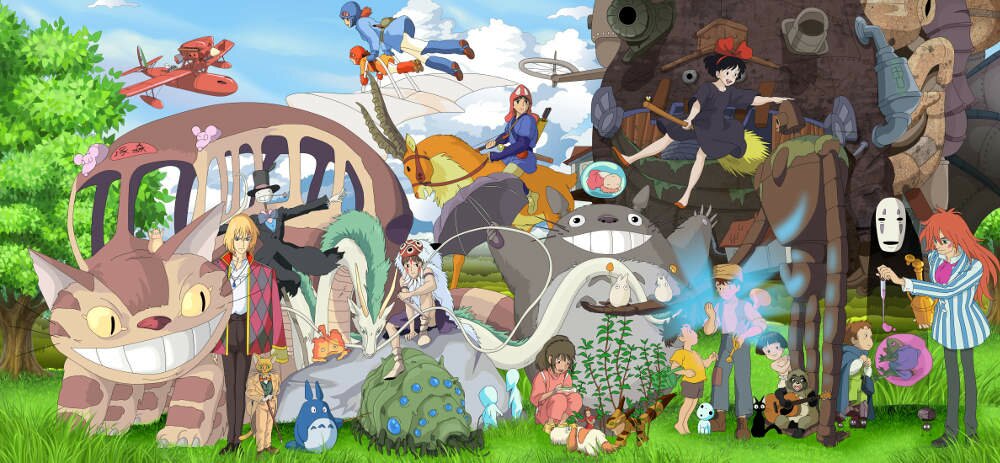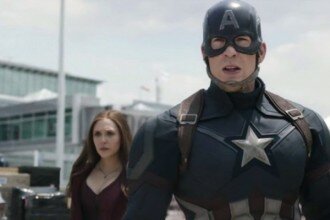The Kingdom of Dreams and Madness, a documentary, allows us a rare peek behind the curtain of Studio Ghibli, one of the world’s most renown animation houses in Tokyo, Japan. Incase you’re not sure how to get your tongue around saying “Ghibli”, the Japanese pronunciation is
Ghibli, an Italian word, refers to both a “hot wind blowing in from the Sahara Desert” and a World War II airplane of the same name, the idea being the studio would “blow a new wind through the anime industry”.
Directed and narrated by award-winning Mami Sunada, The Kingdom of Dreams and Madness also takes an intimate look at the life of Hayao Miyazaki, co-founder of Studio Ghibli, whose films with this animation house as a Director, Producer, Screenwriter and Animator have touched the hearts and minds of generations.
Since the studio opened its doors almost 30 years ago on June 15th in 1985, Studio Ghibli has released some of the highest-grossing animated films in history such as Howl’s Moving Castle, Princess Mononoke, and the highest being Spirited Away which earned US $274 million worldwide.
Reputation aside, The Kingdom of Dreams and Madness (Yume to kyôki no ôkoku) is beautiful to watch, as it follows Miyazaki through the production of his final film The Wind Rises. In fact, ‘Kingdom’ opens with the camera literally following Miyazaki. He walks through Studio Ghibli, up and down the sunlit staircases that overlook the lush greenery outside, not yet crisped by 2012’s Autumn in which this documentary takes place.
All I wanted to do was make something beautiful.
We watch him busy himself, clad in clothes that are humble and warm, kept clean by his crisp white apron – undoubtedly untidied after long days of catching every pencil shaving and dust of lead.
He collaborates with his team, drifting from desk to desk as he creates, thinking and drawing in a place where imagination thrives. It’s not so much as a tour of an office space, but something magical like Santa’s workshop. The walls are laden with beautiful watercolour illustrations, of landscapes and characters, both striking and familiar.
The world isn’t simple enough to explain in words.
Miyazaki is conscious of every minute he spends. His days are timed liked clockwork, he arrives at 11am sharp and stops work at 9pm on the dot – a tight schedule, but one that includes waving to the children of his employees at Studio Ghibli’s in-house nursery. His work is bolstered by his staff of over 400 employees, 100 of them needed to work on The Wind Rises alone.
Miyazaki doesn’t write scripts for his films, instead he draws storyboards. Production begins over a year before the storyboards are finished, so no one knows how the story will end. His film pretty much writes itself. Admittedly, some of the staff find this baffling and give up trying to understand his process, but evidently it has never failed him, even up to his last film.
“This may sound ridiculous, but I’ve had staff tell me they have no idea what’s going on in my films. When we were making Spirited Away, even I didn’t know. The way I see it, we may never understand them. What does one know about this world?” he says thoughtfully as he paints, “The world isn’t simple enough to explain in words”.
What is also interesting about this documentary is not just an insight into production, but an insight into the perspectives of Miyazaki. It is of no surprise that someone with such an imagination like he, would have such a unique way of looking at the world, including strong opinions.
All of humanity’s dreams are cursed some how.
When asked how he feels about the 2011 Fukushima Daiichi nuclear disaster, “It was the 21st century revealing itself,” he says pointedly with arms folded, “I’m a man of the 20th century, I don’t want to deal with the 21st”, finishing before walking away. Miyazaki’s anti-nuclear comments have often rifled some Japanese, even a banner was placed on top of its main office building that declares Studio Ghibli makes movies without relying upon the energy of nuclear power plants.
Miyazaki was originally going to make a sequel to Ponyo as his next project, instead choosing The Wind Rises: a fictionalised biopic of Jiro Horikoshi, designer of the Mitsubishi zero plane: a World War II fighter aircraft. First he was concerned that its subject would not be suitable for children, until a staff member advised him that children should be allowed to be exposed to subjects they are not familiar with.
The film’s release drew controversy and criticism that the protagonist is a warplane engineer, romanticising war. In an interview with digital publication Asahi Shimbun, he was questioned about why he would make a film about a man who made killing machines. Miyazaki insists that it is anti-war and that he believes Jiro Horikoshi wasn’t militant at all. He spoke about part of his inspiration, a quote from Jiro Horikoshi that said “All I wanted to do was make something beautiful”.
As a pacifist, he says Japan’s reasons for war were born out of foolish arrogance and that his concern isn’t with the war machine itself but with the inspired mind behind its design. “It was the extraordinary genius of Jiro Horikoshi, the Zero’s designer, that made it the finest state-of-the-art fight plane of the time … Horikoshi intuitively understood the mystery of aerodynamics that nobody could explain in words”.
One needs to only look at Miyazaki’s filmography to see that the fantasy of flight is a common element, from Kiki’s Delivery Service where the main character zooms around on a broomstick delivering foods, to Laputa: Castle in the Sky. Miyazaki’s father also made parts for the Zero airplanes that were used in World War II.
In The Kingdom of Dreams and Madness, he further explores the mind of Horikoshi and his own works, “You know, people who design airplanes and machines, no matter how much they believe that what they do is good, the winds of time eventually turn them into tools of industrial civilisation. It’s never unscathed. They’re cursed dreams. Animation, too.
“Today, all of humanity’s dreams are cursed some how. Beautiful yet cursed dreams. I’m not even talking about wanting to be rich or famous. Screw that. That’s just hopeless. What I mean is, how do we even know movies are worthwhile? If you really think about it, is this not just some grand hobby? Maybe there was a time when we could make films that mattered, but now? Most of our world is rubbish… It’s difficult”.
Miyazaki’s work is a labour of love and pain. The journey to get this far has been arduous. After almost two and a half years of developing the storyboards for The Wind Rises it feels as though watching this documentary isn’t just a time capsule of Miyazaki’s final triumph, but that it is also a eulogy for Studio Ghibli – an epic crescendo before the curtains close.
When asked if he’s worried about Studio Ghibli’s future, Miyazaki says “The future is clear, it’s all going to fall apart. I can already see it. What’s the use in worrying? It’s inevitable,” said with bittersweetness,
The end is a new beginning.
Arigato, Miya-san.
Thank you, for everything.
The Kingdom of Dreams and Madness is available on Netflix and for download now.
Running time: 118 minutes
Watch when: it’s a quiet weekend
Enjoy it with: a steaming bowl of ramen
You don’t have to: watch The Wind Rises first
Overall Rating: 5/5

